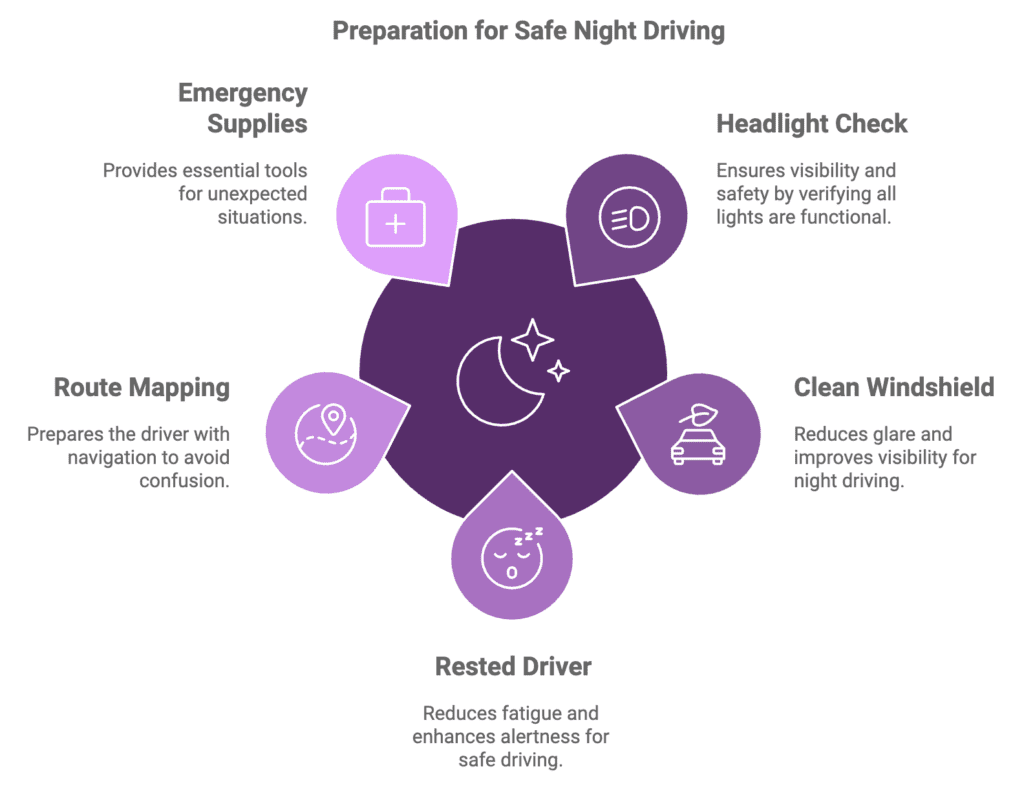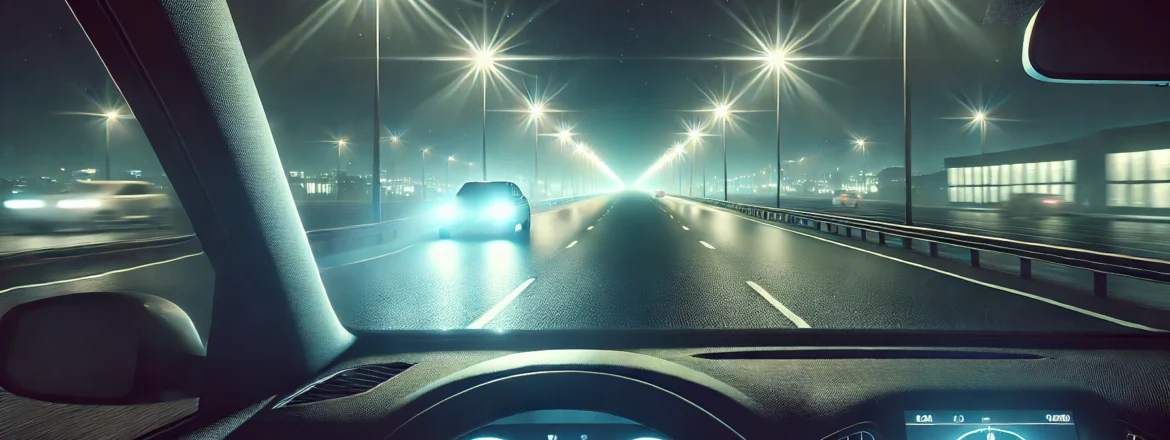Driving at night presents unique challenges, including limited visibility, reduced reaction time, and increased risks. This guide provides essential tips for staying safe while driving after dark. Whether you’re a new driver or a seasoned one, these tips will help you navigate the roads safely.
Table of Contents
- Why Night Driving Is More Dangerous
- Essential Tips for Safe Night Driving
- Preparation Tips for Night Driving
- FAQs on Night Driving Safety
Why Night Driving Is More Dangerous
Night driving is riskier than daytime driving for several reasons:
- Reduced Visibility: Drivers can only see as far as their headlights reach, making it harder to spot hazards in time.
- Increased Fatigue: Drivers tend to be more tired at night, which slows reaction times and impairs judgment.
- More Impaired Drivers: Statistics show that a higher percentage of impaired drivers are on the road at night.
Recognizing these risks helps drivers take extra precautions to ensure a safe journey.
Essential Tips for Safe Night Driving
1. Check and Clean Your Headlights
Dirty or misaligned headlights can drastically reduce visibility. Regularly check your headlights and clean them to ensure they’re bright and pointing in the right direction. Dull or broken headlights should be replaced immediately for optimal safety.
2. Adjust Your Speed for Night Conditions
Speeding can be even more dangerous at night. Lowering your speed gives you more time to react to sudden changes on the road, like unexpected animals, pedestrians, or debris. Drive at a pace that allows you to stop safely within the distance illuminated by your headlights.
3. Avoid High Beams When Near Other Cars
High beams can blind other drivers and increase the risk of accidents. Use low beams when driving near other vehicles, especially when there’s oncoming traffic. High beams are best used on open, rural roads where other cars are not present.
4. Keep a Safe Following Distance
Allow extra space between you and the vehicle in front of you. At night, depth perception can be off, making it harder to judge distances accurately. Maintaining a safe distance gives you more time to respond to sudden stops or obstacles.
5. Stay Focused and Alert
Driving at night requires a higher level of attention. Avoid distractions like cell phones, and take breaks if you feel drowsy. Listening to soft music or talking with a passenger can help keep you awake, but avoid anything that takes your focus off the road.
6. Limit Interior Light Use
Interior lights can cause glare on your windshield, making it harder to see outside. Dim or turn off dashboard lights, navigation screens, and other interior lights to avoid reducing your visibility.
7. Use Proper Eye Care
Headlights, streetlights, and bright signage can strain your eyes at night. To reduce eye fatigue, avoid staring directly at bright lights, and consider wearing anti-reflective glasses if you wear prescription lenses. Regular eye check-ups are essential, especially for night driving safety.
Preparation Tips for Night Driving
Being prepared is just as important as your driving habits. Here are some ways to get ready before hitting the road after dark:
- Check Your Headlights and Taillights: Verify that all lights are functioning, including high beams, fog lights, and brake lights.
- Clean Your Windshield and Mirrors: A clean windshield and mirrors minimize glare and improve visibility.
- Rest Up: Ensure you’re well-rested before a night drive to reduce the chances of fatigue.
- Map Your Route: If you’re unfamiliar with the route, study the map beforehand, so you’re not struggling with navigation in the dark.
- Keep Emergency Supplies: Have a flashlight, spare tire, jumper cables, and a first-aid kit in your vehicle, just in case.

FAQs on Night Driving Safety
1. How can I reduce glare from headlights while driving at night?
Keep your windshield clean, avoid looking directly at oncoming headlights, and use the night setting on your rearview mirror to reduce glare.
2. Are there specific headlights recommended for night driving?
Yes, LED headlights are brighter and provide better visibility. However, ensure they’re correctly aligned to avoid blinding oncoming drivers.
3. Is it safe to use high beams on highways?
High beams can be used on highways if there are no other vehicles nearby. When you see an approaching vehicle, switch to low beams to avoid impairing their visibility.
4. How often should I have my eyes checked for night driving safety?
An annual eye check-up is recommended, especially for those who frequently drive at night. Regular check-ups can detect any vision problems that might affect night driving.
5. What should I do if I feel drowsy while driving at night?
If you feel drowsy, pull over to a safe location and take a short nap. Avoid pushing through drowsiness, as it impairs reaction time and decision-making.
Night driving can be challenging, but with the right habits and preparation, you can stay safe and reduce risks on the road. Remember, staying alert and maintaining a safe driving environment makes a difference.


